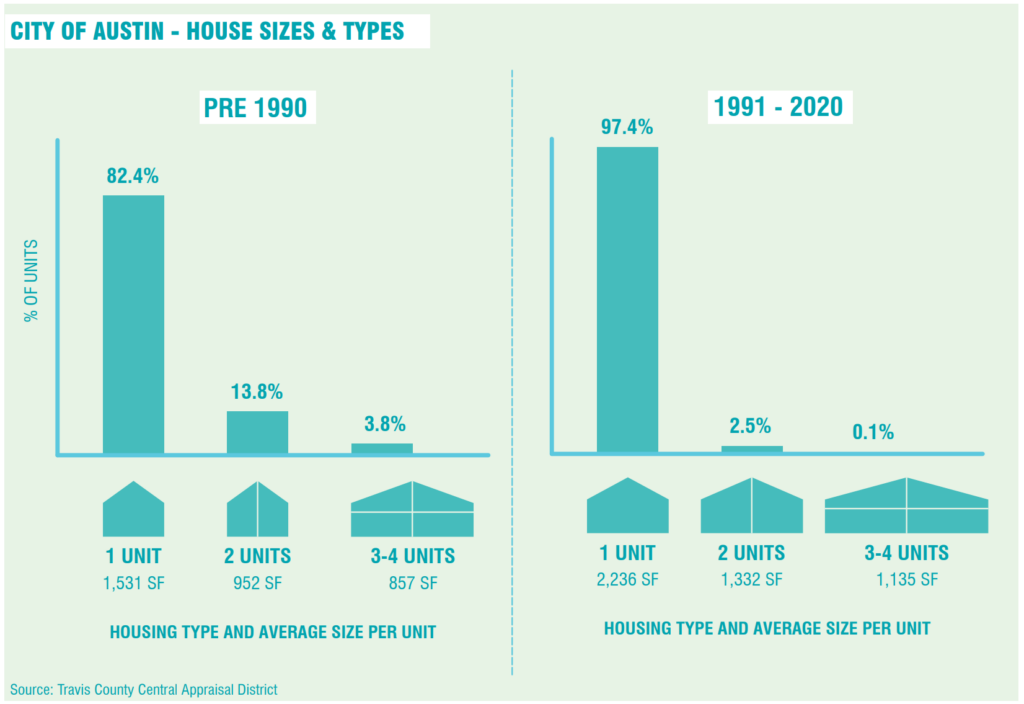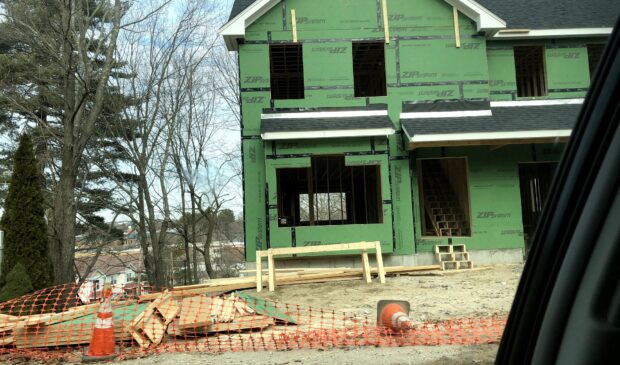Staff, City Council continue to work on HOME initiative
Wednesday, November 29, 2023 by
Jo Clifton At Tuesday’s work session, City Council heard from the city’s planning staff as well as two architects from the local American Institute of Architects housing committee on various aspects of the HOME initiative, a proposal to make changes to the city’s Land Development Code. Council is scheduled to hold its last hearing on Dec. 7 and vote on the first part of the proposal, which advocates hope will result in more housing options for middle-income residents. However, many questions still remain – not only about staff’s recommendations, but also about Planning Commission proposals and amendments that Council members may offer.
Andrea Bates, assistant director in the Planning Department, reiterated that the HOME initiative would allow up to three homes on lots zoned Single Family (SF-1 and SF-2) or Family Residence (SF-3). It would also allow tiny homes to be considered a dwelling unit and remove the limit on the number of unrelated adults who may live together.
These changes would “increase housing supply and support building of smaller, more energy-efficient homes,” Bates said. She noted that the changes would limit the applicability of the McMansion ordinance to lots with only one home, but there will certainly be discussions about eliminating the ordinance altogether.
Lucy Begg, an Austin architect with the American Institute of Architects housing advocacy committee, showed data indicating that over the same time period, the number of single-family homes had increased significantly while the number of lots with two or more homes has decreased significantly.

Credit: AIA Austin
Begg said the city needs to include regulations for floor area ratio in order to make sure smaller houses are built. She said her group was in support of the Planning Commission recommendation that involves incentivizing builders and homeowners who preserve houses currently in place. The preservation bonus applies to homes built before 1960 and the sustainability bonus for homes built after that date.
“We don’t yet have any modeling that includes the preservation bonus,” Bates said, adding that they would try to get that done this week.
Interim City Manager Jesús Garza warned Council that staff may find some of the recommendations made by the Planning Commission not to be compatible with City Council’s objectives. In that case, Garza said staff would explain how such amendments might be problematic.
Council Member Leslie Pool, the major sponsor of the HOME ordinance, thanked city staff and members of the Planning Commission’s subcommittee on the initiative. “I really appreciate the conversations we’ve had today, particularly the conversations revealing the 30-year trend we’ve had toward large single-family homes,” she said.
Pool said the amendments would meet two of her priorities: ensuring smaller structures and preserving existing homes. She said the conversations highlighted “particularly the trend that is incentivized by our current code, considering where we are in our housing emergency and our lack of starter homes and our options for homeowners. I am very grateful that we are working together to change that. … To draw a fine point on it, we are not starting from zero here. … We are hampered by our current code, namely the ironically named McMansion ordinance, which promotes the big house trend.” Pool said she was ready to do the work to prevent McMansions, not encourage them.
Council Member Alison Alter had numerous questions, only some of which staff were prepared to answer. She asked whether the fire chief was available because she wanted to make sure that the new regulations would not be in conflict with ordinances designed to prevent fires. Although the chief was not there, a representative of the Law Department assured her that the wildland-urban interface regulations would remain in place.
Mayor Kirk Watson urged his colleagues to write up their recommendations for amendments to the ordinance and post them to the City Council Message Board. Shortly after the meeting, Council Member Zo Qadri did just that.
Qadri wrote, “As the district with the largest number of homes built before 1960, District 9 has the most to gain from [a historic) preservation incentive and the most to lose without its passage,” he wrote. “The Preservation Bonus is a wonderful addition to Council Member Pool’s HOME Initiative, helping preserve community character and history while utilizing our existing housing stock to its fullest. … I’d like to work with Law to make a motion that ensures the Historic Preservation Office coordinates with Development Services staff on review and implementation of the preservation bonus to ensure it is used to its maximum potential.”
Meanwhile, Community Not Commodity, which is fighting changes to the code, continues to urge property owners to oppose the HOME initiative on an individual basis by filing a protest. Their most recent email says, “We will deliver your protest to the city electronically and a hard copy in person. The protest deadline has been extended to December 5 – only a week away!”
Photo by Kgacs, CC BY-SA 4.0, via Wikimedia Commons.
The Austin Monitor’s work is made possible by donations from the community. Though our reporting covers donors from time to time, we are careful to keep business and editorial efforts separate while maintaining transparency. A complete list of donors is available here, and our code of ethics is explained here.
You're a community leader
And we’re honored you look to us for serious, in-depth news. You know a strong community needs local and dedicated watchdog reporting. We’re here for you and that won’t change. Now will you take the powerful next step and support our nonprofit news organization?










